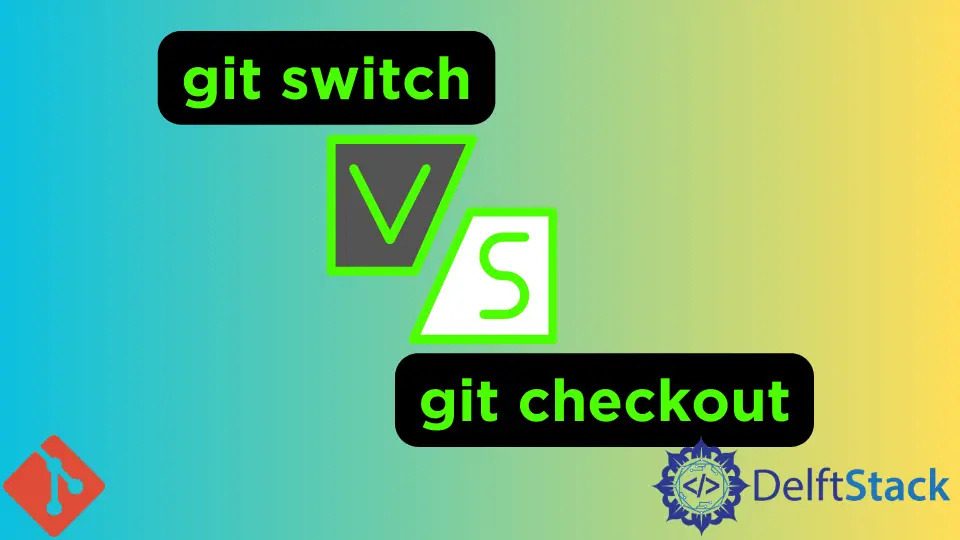Difference Between Git Switch and Checkout
-
Difference Between the Git
switchandcheckoutCommands -
Switch Between Branches Using the Git
checkoutandswitchCommands

Git is recognized as a unique and open-source platform that enables users to work with its handy and simplest command line with a vast range of commands. It is increasing its command line with time by introducing new versions daily.
With the introduction of the new version, Git launched some new commands similar to the old commands but with some new properties with the latest updates. Before version 2.23, git checkout was an overburdened command used for multiple tasks for the current scenario.
In this way, developers face lots of confusion, like which command to run at which time and in which circumstances to get better results. To release these situations, Git launched its new version comprising more useful commands that can perform specific roles in Git.
And among those, git switch and git restore are remarkable. This tutorial will demonstrate the difference between the git switch and git checkout commands.
Difference Between the Git switch and checkout Commands
the git checkout Command
The checkout command is used to switch the recently active branches; it is also used to undo changes on a file and can also be used to restore files. The main cause of using the checkout branch is to switch to another branch and also make it the new head branch in the current repository.
If we want to restore the earlier version of the particular file, we can accomplish it through the git checkout command by resetting the specific file to the earlier version. This will not affect the rest of the project in any way.
Also, suppose a developer works on a specific branch and wants to work on a different branch due to the developers’ dependency. In that case, you can switch to other branches using the checkout command in Git.
the git switch Command
The switch command is used to create branches, move to other branches, and switch to our current HEAD branch of the current repository.
It’s not a new feature but an advanced alternative option for switching branches previously done by git checkout in previous versions of the Git version control. Git checkout was not a bad option, but it’s a versatile tool used simultaneously for many purposes.
Unlike checkout, the switch command is used for limited purposes only, that is, creating and switching between branches of the repository only.
The git switch command mainly focuses on developing and switching between branches, while the git checkout command focuses on targeting commits of the work that has been completed.
Switch Between Branches Using the Git checkout and switch Commands
For developing a new branch using the checkout command, we use the flag -b, which will help us create a new branch and instantly switch to that branch. It performs two operations at the same time in only one Git command.
git checkout -b new_branch
Luckily, the command git switch also performs these two operations simultaneously using only a single command. The flag used with this command is -c.
git switch -c new_branch
Abdul is a software engineer with an architect background and a passion for full-stack web development with eight years of professional experience in analysis, design, development, implementation, performance tuning, and implementation of business applications.
LinkedInRelated Article - Git Checkout
- Git Checkout VS Pull
- Difference Between Git Checkout and Git Clone
- How to Checkout a Remote Git Branch
- How to Ignore Local File Changes in Git
- How to Rollback to an Old Commit in a Public Git Repository
- Difference Between Git Checkout --Track Origin/Branch and Git Checkout -B Branch Origin/Branch
